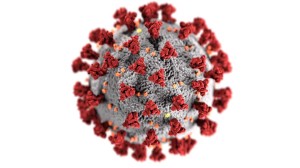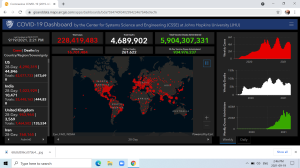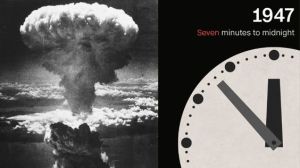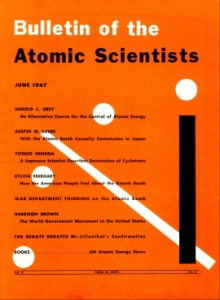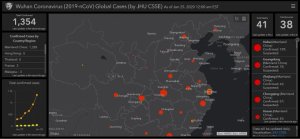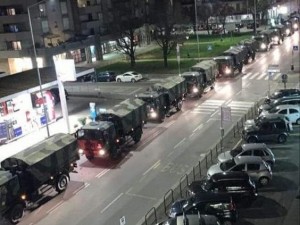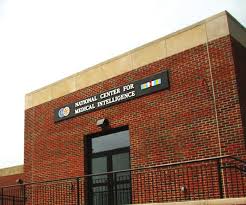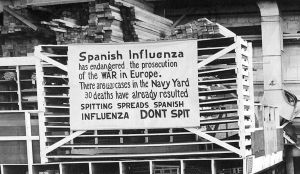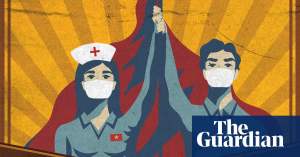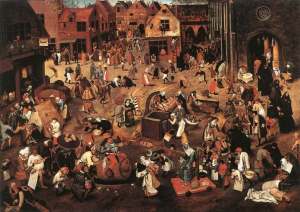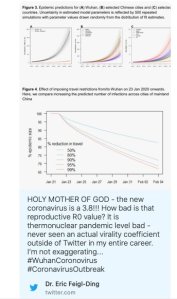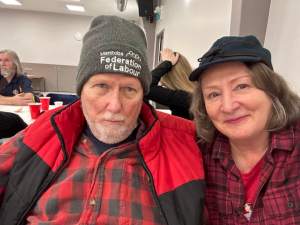






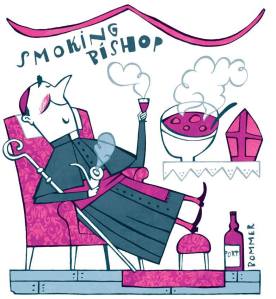
Four very long years, indeed.
Now, make mine, a “sinful servant” of the Church Militant on Earth, a Smoking Bishop, a mulled wine wassail, this festive season at university and church potlucks. Even an eggnog will do. O come, O come, O Sapientia (O Wisdom); O Adonai (O Ruler of the House of Israel); O Radix Jesse (O Root of Jesse); O Clavis David (O Key of David); O Oriens (O Rising Dawn); O Rex Gentium (O King of the Nations); and O Emmanuel (O God With Us).
We now work and socialize for the most part without masks. But the sensible among us (apparently not a particularly large cohort, with only about 15.4 per cent of Manitobans, as a cumulative percentage of the population, vaccinated as recommended by the National Advisory Committee on Immunization (NACI), an external advisory body that provides the Public Health Agency of Canada (PHAC) with independent, ongoing and timely medical, scientific, and public health advice in response to questions from PHAC relating to immunization) still get our latest COVID-19 updated vaccinations. I had my seventh shot on Oct. 25. A couple of days later, I learned of the new COVID-19 subvariant HV.1. Hard to know these days exactly how many new COVID-19 infections the new subvariant is responsible for, but a reasonable guess is at least somewhere between 30 and 50 per cent – and soon, if not already, probably the majority of new COVID-19 infections in Canada.
Take heart though. The Justinian Plague erupted in the Egyptian port city of Pelusium in the summer of 541 AD and went through 18 waves until 750 AD.
Pandemics kind of fade away, they don’t really end. And even the fade-away is far from a straight-line exit back from a pandemic world to a pandemic-free world. COVID-19 is here to stay for the foreseeable future, manufacturing new subvariants along the way. We have been fortunate so far that while many of the subvariants that have emerged over the last four years have been more contagious than their predecessors, they have not been more deadly. There is no guarantee that pattern will continue.
“The world has emerged from the COVID pandemic, but it’s still under its tremendous impacts. The global economy is recovering, but its momentum remains sluggish. Industrial and supply chains are still under the threat of interruption,” U.S. President Joe Biden told President Xi Jinping of the People’s Republic of China Nov. 15 before their bilateral meeting in Woodside, California.
Biden has it about right.
While COVID-19 is still a global pandemic, it is no longer a Public Health Emergency of International Concern (PHEIC), defined by the World Health Organization (WHO) as an extraordinary event, which is determined to constitute a public health risk to other countries through the international spread of disease and to potentially require a co-ordinated international response After a five hour meeting in Geneva – its 15th regarding COVID-19 – the WHO’s International Health Regulations (2005) (IHR) Emergency Committee recommended on May 4 “that it is time to transition to long-term management of the COVID-19 pandemic” and advised “the ongoing COVID-19 pandemic … is now an established and ongoing health issue which no longer constitutes a Public Health Emergency of International Concern. WHO Director-General, Dr. Tedros Adhanom Ghebreyesu, who has the final say, concurred with the committee.
“While we’re not in the crisis mode, we can’t let our guard down,” said Dr. Maria Van Kerkhove, WHO’s Covid-19 technical lead and head of its program on emerging diseases. She added that the disease and the coronavirus that causes it are “here to stay.”
The COVID-19 worldwide death toll as of Dec. 6 stood at 6,985,964 deaths, the WHO reports. The United States had seen 1,144,877 COVID-19 deaths by Dec. 6, and in Canada the number is around 53,000 deaths.
On May 11, the United States ended its own federal public health emergency declaration, which dated back to Jan. 31, 2020.
The National Center for Medical Intelligence (NCMI) at Fort Detrick, Maryland warned as far back as November 2019 that a contagion was sweeping through China’s Wuhan region, changing the patterns of life and business and posing a threat to the population. The report was the result of analysis of wire and computer intercepts, coupled with satellite images. The medical intelligence (MEDINT) cell within Canadian Forces Intelligence Command (CFINTCOM) gave a similar warning in January 2020.
The the most chilling thing that I’ve heard to date during the COVID-19 pandemic, was this audio clip posted on Twitter March 21, 2020. I heard this brief 30-second clip on Twitter March 24, 2020, the day after the “surge” hit New York City. Tim Mak is National Public Radio (NPR’s) Washington investigative correspondent – and an emergency medical technician (EMT), which is how he got the message. Aside from the subject matter, there is something eerie about that electronically-generated voice on the automated message that went out, with this message:
“This an emergency message. This is a priority request for D.C. MRC volunteers (District of Columbia (DC) Medical Reserve Corps (DC MRC)…” (https://twitter.com/i/status/1241471610395267084)
The District of Columbia (DC) Medical Reserve Corps (DC MRC) supports the DC Department of Health (DC Health) in its role as lead for public health and medical emergency preparedness, response and recovery by recruiting, training, and deploying medical and non-medical volunteers to assist with planned events and emergencies.
It was ProMED (Program for Monitoring Emerging Diseases)-mail, a program operated by the Boston-based International Society for Infectious Diseases, which served as the early warning disease surveillance network that alerted the world to the start of the COVID-19 pandemic in an alert issued one minute before midnight China Standard Time (CST) on Dec. 30, 2019.
What does living in a world where the COVID-19 pandemic continues but is no longer considered by the WHO as a Public Health Emergency of International Concern look like?
Different than the world up to 2020, but also closer to that not-so-long-ago world than we were for most of 2020, 2021 and 2022. I’ve been to two in-person meetings so far this week; that would have been questionable and unlikely last year, and unthinkable and probably illegal in many places in 2020 and 2021.
Last Saturday, we were out at “A Community Christmas Evening,” sponsored by the Thompson Seniors Resource Council, and formerly known as the Old Fashioned Christmas Concert. It was my first visit inside the Letkemann Theatre at R.D. Parker Collegiate since before the pandemic in 2019. Two weeks earlier, we were out at the Thompson Kin Club Fall Harvest Party dinner.
So far more socializing, mask-free and fully vaccinated (epidemiologists really must shake their heads at human behaviour, I know), than at any point since the fall of 2019. All, of course, with an eye turned to my Facebook page, where I can read friends daily posts about getting COVID-19 recently for either the first or umpteenth time, depending, on what their … what … luck has been?
That’s the kind of fall and festive season it has been here in Thompson, Manitoba in 2023. Lots of public socializing, vaxxed but unmasked, with one eye on the ever-spinning COVID-19 roulette wheel never too far in the background.
It it is in that spirit we offer you this recipe for a Smoking Bishop, courtesy of Cedric Dickens, a great-grandson of Charles Dickens, published in his 1988 book, Drinking with Dickens:
“A merry Christmas, Bob!” said Scrooge, with an earnestness that could not be mistaken, as he clapped him on the back. “A merrier Christmas, Bob, my good fellow, than I have given you, for many a year! I’ll raise your salary, and endeavour to assist your struggling family, and we will discuss your affairs this very afternoon, over a Christmas bowl of Smoking Bishop, Bob!”
Smoking Bishop
6 Clementines
1/2 C sugar
30 cloves
8 C moderately sweet red wine
1 bottle ruby port
Bake the oranges in a medium oven for about 20 minutes. Stick cloves into the oranges and then put them into a large bowl. Pour the wine over them and add the sugar. Cover and leave in a warm place for 24 hours. Squeeze the juice from the oranges and mix it with the wine. Add the port and heat the mixture in a pan. Do not boil. Serve hot.
You can also follow me on X (formerly Twitter) at: https://twitter.com/jwbarker22
